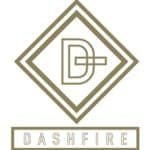Material Options: 304 or 316L Stainless Steel
CSTR reactors must endure harsh working conditions, making material selection crucial. We offer two high-grade stainless steel options for our CSTR reactors:
304 Stainless Steel
This cost-effective material offers excellent corrosion resistance and is suitable for general industrial applications with moderate environmental demands.
316L Stainless Steel
With added molybdenum, 316L stainless steel provides enhanced corrosion resistance, especially in aggressive environments involving harsh chemicals. It is commonly used in the pharmaceutical and food processing industries, where high purity and resistance to corrosion are essential.
Multiple Agitator Options for Varied Applications
CSTR reactors are equipped with various agitators to meet the requirements of different processes. Each agitator type is designed for optimal efficiency based on the viscosity of the material and the thermal and process demands. The following agitators are available:
Anchor Agitators
Ideal for medium to high viscosity fluids, promoting complete mixing and minimizing material from adhering to the tank walls.
Turbine Agitators
Suitable for low to medium viscosity fluids, providing low agitation for homogeneity in the reaction.
Propeller Agitators
Best for low viscosity materials, offering moderate mixing and high flow rates in the reactor.
These options allow for customization of the CSTR reactor to ensure peak performance and productivity for specific applications.
Three-Layer Design with Heating Jacket
The CSTR reactor comes with a three-layer design, including a heating jacket for precise temperature control. This design is critical for processes requiring strict thermal management. Two main heating methods are available:
Electrical Heating
Provides precise control over temperature, with power options ranging from 1.5 to 55 KW. Electrical heating is commonly used when constant and accurate heat is required.
Steam Heating
Steam heating offers efficient heat transfer and is ideal for large-scale operations that require rapid and effective heating. Both methods ensure consistent temperature regulation to optimize reaction rates.
Power and Voltage Options
Our CSTR reactors are designed to meet diverse power and voltage requirements. The power range spans from 1.5 KW to 55 KW, depending on the size and process needs. Voltage options range from 110V to 600V, making our reactors suitable for various industrial settings worldwide.
Applications of CSTR Reactors
CSTR reactors are highly versatile and widely used in many industries, including:
Chemical Manufacturing
Ideal for maximizing reactant concentrations in processes such as polymerization, resin, and adhesive synthesis.
Pharmaceutical Industry
CSTR reactors are vital in pharmaceutical production, ensuring uniform mixing and strict quality control during the manufacturing of drugs.
Food and Beverage Industry
Commonly used in processes such as fermentation, pasteurization, and high-volume production for quality assurance.
Wastewater Treatment
Essential in biological treatment processes, CSTR reactors help in degrading organic waste and removing pollutants from water before it is discharged into the environment.
Biotechnology
Used in fermentation, enzymatic reactions, and biotechnological investigations, CSTR reactors provide ideal conditions for industrial-scale production processes.
Frequently Asked Questions (FAQ)
1. What’s the difference between 304 and 316L stainless steel?
304 stainless steel is suitable for general applications with moderate corrosion resistance, while 316L stainless steel is more resistant to harsh chemicals and suitable for environments with acids, alkalis, and chlorides.
2. What criteria should I use for selecting an agitator in my CSTR reactor?
The choice of agitator depends on the viscosity of the materials being handled. For thick fluids, an anchor agitator is ideal, while turbine or propeller agitators are more suitable for low to medium viscosity liquids.
3. What are the advantages of using jacketed CSTR reactors?
The jacket provides precise temperature control, essential for heating or cooling the reactor contents. This is crucial in processes where thermal control affects product quality or reaction rates.
4. Can the heating configuration of the reactor be modified?
Yes, our CSTR reactors support both electric and steam heating options. The choice depends on the process requirements and the available energy source.
5. What voltage range is supported by the CSTR reactor?
Our reactors support a broad voltage range from 110V to 600V, making them suitable for different industrial electrical systems worldwide.
Contact Us
Are you looking for a custom-made CSTR reactor that enhances efficiency and productivity in your industrial processes? Our reactors are designed for use in chemical, pharmaceutical, and biotechnology industries. Reach out to our expert team today, and let us help you choose the perfect reactor for your operation.
Maximize your production capabilities with our advanced CSTR reactors – Contact us now!









